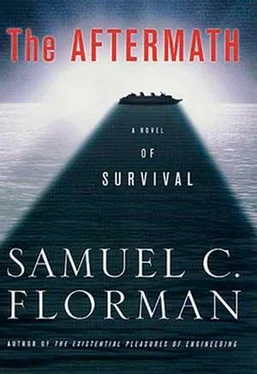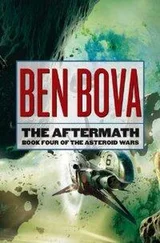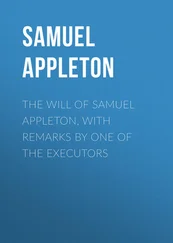Samuel Florman - The Aftermath
Здесь есть возможность читать онлайн «Samuel Florman - The Aftermath» весь текст электронной книги совершенно бесплатно (целиком полную версию без сокращений). В некоторых случаях можно слушать аудио, скачать через торрент в формате fb2 и присутствует краткое содержание. Город: New York, Год выпуска: 2001, ISBN: 2001, Издательство: Thomas Dunne books, Жанр: sf_postapocalyptic, на английском языке. Описание произведения, (предисловие) а так же отзывы посетителей доступны на портале библиотеки ЛибКат.
- Название:The Aftermath
- Автор:
- Издательство:Thomas Dunne books
- Жанр:
- Год:2001
- Город:New York
- ISBN:0-312-26652-9
- Рейтинг книги:5 / 5. Голосов: 1
-
Избранное:Добавить в избранное
- Отзывы:
-
Ваша оценка:
- 100
- 1
- 2
- 3
- 4
- 5
The Aftermath: краткое содержание, описание и аннотация
Предлагаем к чтению аннотацию, описание, краткое содержание или предисловие (зависит от того, что написал сам автор книги «The Aftermath»). Если вы не нашли необходимую информацию о книге — напишите в комментариях, мы постараемся отыскать её.
The Aftermath — читать онлайн бесплатно полную книгу (весь текст) целиком
Ниже представлен текст книги, разбитый по страницам. Система сохранения места последней прочитанной страницы, позволяет с удобством читать онлайн бесплатно книгу «The Aftermath», без необходимости каждый раз заново искать на чём Вы остановились. Поставьте закладку, и сможете в любой момент перейти на страницу, на которой закончили чтение.
Интервал:
Закладка:
Along with the water supply, there came the question of sanitation. It would be some time before outhouses could be replaced with indoor plumbing; but for some impatient people, this was a priority of no small moment. In the interim, cleanliness and hygiene had to be monitored.
So the Planning Subcommittee established a Water Department consisting of one hundred persons. This department was directed to begin with studies, surveys, inspections, and designs. Construction projects would be undertaken as they could be scheduled within an overall development plan.
It had been a long day, and a lot had been accomplished. Alf Richards looked at his watch, and was about to suggest a break for dinner. But before he had a chance to do this, Millie Fox was on her feet and vigorously asking to be recognized.
“I’ve heard a lot of sensible proposals,” she said. “But we’re forgetting one very important matter. For anything we do, from planting corn to digging a ditch, we’re going to need tools. I know we’ll get around to figuring out how to make these tools; but we can’t wait for that. I suggest that we send out a band of, say, one hundred workers—I would call them ‘the Scavengers’—to find such tools as have survived the inferno. These Scavengers should be instructed to bring back every useful implement that is not already in the hands of a hardworking farmer.”
In addition, Millie suggested, the Scavengers should be told to keep an eye out for any pieces of metal—say, steel beams in partly destroyed buildings—that might later be salvaged for recycling.
“A very good point,” Alf Richards said. “We can probably have blacksmiths at work within a few weeks; but they will need materials to work with. And even if we give high priority to mining and refining metals, such operations can’t produce results overnight. So, scrap metal will have to be one of our first raw materials.”
Looking at his watch once more, Richards ignored a few hands raised asking for recognition and spoke out loudly.
“Ladies and gentlemen,” he said. “Let’s take a break for dinner and then reconvene. Our work has only begun—but it’s a good beginning. I wish my board of directors had worked as smoothly as we have here today!”
6
After dinner, Alf Richards reassembled the subcommittee and called the meeting to order with renewed gusto. It was high time, he said, to talk about construction. Once food and water were secured, building had to be the priority of priorities for the survivor community. Good progress had already been made building beehive indlus and erecting the community pavilion. But now a master plan was needed, and an organization to put it into effect. This is where the old hardhat was in his glory. He had given the matter a lot of thought, and prepared some preliminary estimates of the size and types of work gangs that would be most effective. He proposed establishing a construction company called Shaka Enterprises in honor of the fabled Zulu warrior king. Considering the immediate tasks to be accomplished, and the resources available, he recommended that two thousand individuals be assigned to the enterprise. This body of workers would consist of skilled tradesmen, laborers, and supervising engineers, three quarters of whom would work on buildings; the other quarter on roads, pipelines, and other infrastructure. This was a large commitment out of the total non-agricultural workforce of seven thousand; but the need was great. The most urgent objective was to provide housing—shelter for everyone. Yet construction for industry was also important. After all, Alf reminded the group, the agreed ultimate aim was not just to survive in safety and comfort, but to move as rapidly as possible out of the Stone Age into an industrial society.
They would need mills for grinding grain and sawing wood; furnaces for firing brick and other clay-based products, and for smelting metals; sheds for blacksmith forges and various workshops. Roads were also critical, since transport of materials would be vital to any recovery operations. The roadbeds, which had previously carried highways and railroads, had to be reshaped and maintained, first for horses and oxcarts, eventually for mechanical vehicles of a sort yet to be determined.
The Planning Subcommittee approved Alf Richards’s scheme, as he had assumed they would, and they also endorsed his choice for a top management team. One of his American associates was to be in charge of factory structures, furnaces, and dams for sawmills and gristmills; a Swiss highway engineer was given oversight of work on roads, bridges, and pipelines; and an experienced contractor from Johannesburg, who had been in Ulundi at the time of the Event, took charge of regular building construction—homes, schools, clinics, and the like.
To provide direction for the constructors, the subcommittee created a professional design team of architects, civil engineers, and other specialists, assisted by surveyors and various helpers—one hundred individuals in all.
This prompted Stephen Healey to ask a question: “If we put all these architects and engineers to work, where are they going to get the paper, pens, and pencils they’ll need?”
“A good question,” Richards replied. “And we’ve looked into that. I can report that the ship’s purser has saved a goodly supply of these materials. They will be allotted according to real and demonstrated need under my direct supervision.”
The Ulundi Indaba had also commandeered such writing implements and paper as had escaped fire and flood in several office buildings. With rationing and conservation, there would be enough to fill the needs of the professionals for a year or more. In the meantime, Richards went on to explain, ten or so artisans would be designated to experiment with making pencils out of wood and graphite, and pens from quills, fine-haired brushes, and when available, thin metal plate. As for the ballpoint pen, that most ubiquitous implement of the immediate past, when the current supply ran out, that would be it—at least for a number of years. Not every item could be ranked high on the subcommittee’s list of priorities.
“We can think about making paper,” Richards said, “as soon as wood pulp becomes available.” Gordon Chan suggested that the tannery workers might try their hand at making parchment. This idea was greeted with considerable skepticism. The scheme would depend on obtaining the skins of young sheep and goats—washed, stretched, scraped thin, whitened with chalk, and smoothed with pumice—bringing the survivors “up to the Middle Ages at last,” one wag commented. The process was eventually tried, and it yielded some wonderful material, although never in significant quantities.
So, the construction enterprise was established; but still Alf Richards was not content.
“Plans are wonderful,” he grumbled impatiently, “but if we’re going to start building, what we really need is lots of wood and lots of nails. These beehive huts have come in handy, and I know that up in the hills, folks have been fixing up their houses using stone along with blocks made from dried mud. I’m sure we’ll get around to making bricks and cement, too. But we can’t mark time waiting for that day. Where is the wood?”
“Fortunately,” said Peter Mavimbela, “there are several forested areas up in the hills that have been spared by the flames. And we have forestry experts who can tell us how this resource should be harvested, replanted, and nurtured. But right now, just like the farmers, we’re hampered by lack of tools—beginning with axes, saws, ropes, and animal-drawn sleds. Further, although lumber can be roughly shaped with axes and hand saws, we really ought to get some sawmills in operation as soon as possible.”
Читать дальшеИнтервал:
Закладка:
Похожие книги на «The Aftermath»
Представляем Вашему вниманию похожие книги на «The Aftermath» списком для выбора. Мы отобрали схожую по названию и смыслу литературу в надежде предоставить читателям больше вариантов отыскать новые, интересные, ещё непрочитанные произведения.
Обсуждение, отзывы о книге «The Aftermath» и просто собственные мнения читателей. Оставьте ваши комментарии, напишите, что Вы думаете о произведении, его смысле или главных героях. Укажите что конкретно понравилось, а что нет, и почему Вы так считаете.












